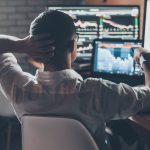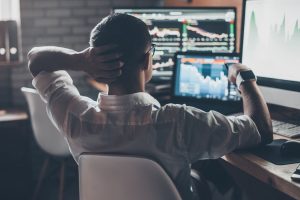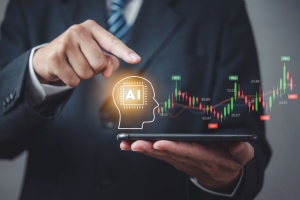
AI fuels innovation in every industry … how faster testing means faster innovation … the next trillion-dollar stock
Are you familiar with the 10,000-hour rule?
Made popular by Malcolm Gladwell in his book “Outliers,” the theory states that it takes 10,000 hours of practice to achieve mastery of complex skills.
Do you want to play the cello like Yo Yo Ma? Want to code like Mark Zuckerberg? You’ll need 10,000 hours of intense practice.
A famous story about Pablo Picasso illustrates this point.
Picasso was approached by an admirer while he was at a Paris market. The admirer asked for a quick sketch on a paper napkin.
Picasso quickly complied and handed the napkin back with a request for one million Francs.
The admirer said: “How can you ask for so much? It took you five minutes!”
“No,” he replied, “It took me 40 years to draw this in five minutes.”
Now, this story may not be true, but it demonstrates that painting like Picasso is less about the five minutes spent on one napkin drawing, and more about the 10,000+ hours spent on your artwork.
Like all things, technology is changing the 10,000-hour rule as well.
We’ve still not replaced the requirement for intense practice … but artificial intelligence is making it easier and easier to achieve mastery.
Digital twins advance health care
Maybe you saw the recent story in The Wall Street Journal Thursday about how AI is being used to make medical training and treatment much easier.
From an article titled: “A ‘Digital Twin’ of Your Heart Lets Doctors Test Treatments Before Surgery.”
Clinicians envision a tomorrow where nearly everyone could have a digital twin created by artificial intelligence, using information from medical exams, wearable data devices and medical records. AI could search through data of others with comparable issues and run simulations while providing continuous monitoring of a patient’s health.
Essentially, the doctor could “practice” his treatment on the digital twin without doing anything to the real person. The article continues…
Like a crash-test dummy, a digital twin could be used to test drugs and conduct trials without harming the actual patient. A digital twin of a heart could allow surgeons to visualize the procedure and the patient’s specific vessels before an operation. The technology could be used to design highly accurate prosthetics or determine the most effective rehabilitation exercises. Digital twins of a patient’s uterus and cervix could help predict pregnancy outcomes.
Imagine if your surgeon can establish his or her mastery on a digital twin of your body. Not only can they test treatments, but they can even map out surgeries specific to your body before they happen!
AI usage fuels innovation
Another example of how digital twins accelerate innovation is in the testing of new technology. For example, let’s imagine you designed a new electric car battery. Pre-AI, you must envision it, create blueprints, and then build a bunch of prototypes that will have slight differences.
That’s because you’re trying to get just the right mix of materials and battery chemistry… at a cost that makes sense.
Once you spend all that time designing and building prototypes, then you must do a ton of testing.
You might test 50 different versions of your battery – and that can take years.
What does one version do in 100-degree temperatures? What about 10 degrees?
What does it do when it’s wet? Or in the desert?
How does it perform when used 15 times day? Or 15 times a year?
How long does it perform well? How fast does its performance degrade over time?
This kind of testing of innovative products is long and tedious – but absolutely necessary.
And it’s easy to think of examples in many different industries.
Car companies must do it.
Drug makers must do it.
Medical device companies must do it.
Food companies must do it.
At the end of the day, creating and testing a new idea… is a brutal amount of work and it takes a ton of time.
And here again is where a digital twin can speed the process. All the different testing conditions can be done digitally, without the cost and expense of prototypes and tedious data collection under specific conditions.
The faster you can test, the faster you can innovate.
The tailwinds behind AI investments
Regular Digest readers know that Jeff Remsburg and I joke that we cannot write about AI enough. The opportunity is so big that it will change our society.
Consulting firm PriceWaterhouseCoopers estimates that the total economic impact of AI on the global economy will total $15.7 trillion between now and 2030. With all that money at stake, it’s no wonder innovators are racing to take advantage before the competition.
Global macro investing expert Eric Fry has been tracking AI advancement for years.
Here is how he addressed the AI opportunities to his readers.
We believe that artificial intelligence (AI) is only just scraping the surface of its capabilities – and the profits that follow from this revolutionary technology could be life-changing.
Now, I’m a “macro investor,” which simply means I look at the investing world from a “top-to-bottom” perspective. I chisel away the fleeting trends that often distract investors (meme stocks, anyone?) until we uncover the most dominant “megatrends” – the ones that produce outstanding investment opportunities.
Often, these opportunities fly under the radar, especially when a megatrend is early in its development. But that’s the best time to establish a position in them.
Establishing an early position is the key to getting that 10-bagger
Every AI company that has reached a $1 trillion market cap has showered its investors with wealth-building opportunities.
Eric Fry believes he has found the next one.
When Eric talks about an opportunity that big, we listen. He has found more than 41 stocks that have gone on to soar more than 10X.
That’s why around the InvestorPlace offices he’s known as “Mr. 1,000%.”
The company Eric is referring to is using a new application of AI that he believes will revolutionize a $13.1 trillion industry.
He’ll share more details on all that during a special strategy session we have scheduled for Tuesday, May 21st at 7 p.m. Eastern.
You can reserve your spot for that strategy session by going here.
Enjoy your weekend,
Luis Hernandez
Editor in Chief, InvestorPlace






